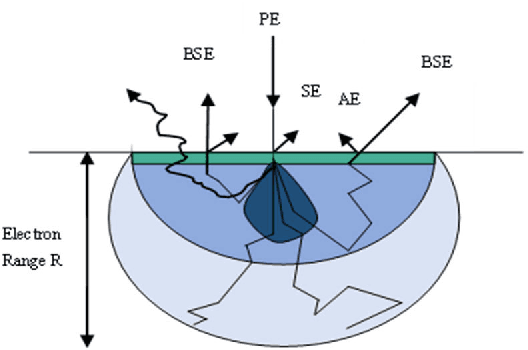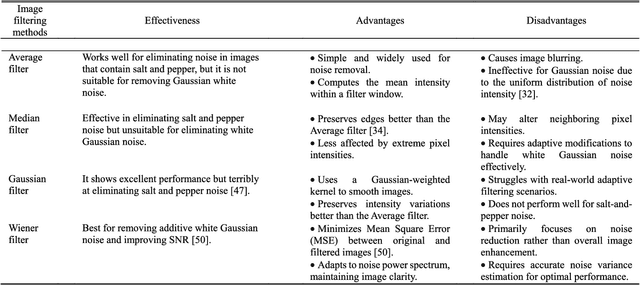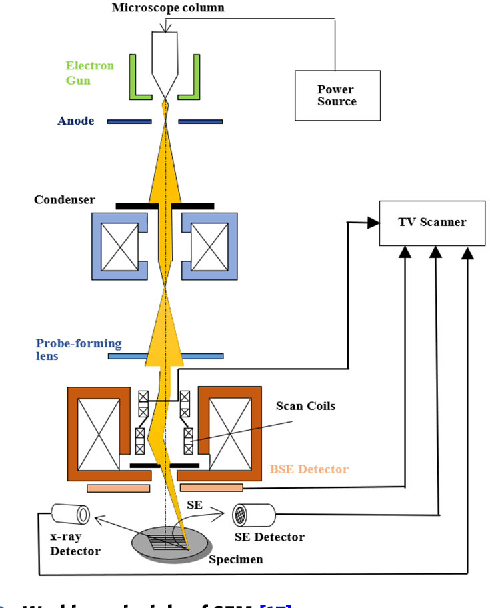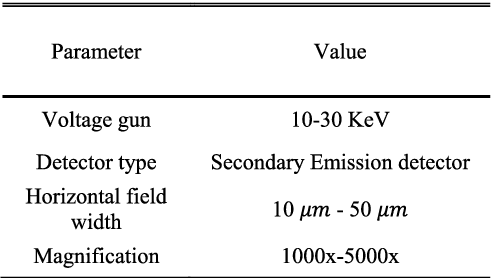Gpr
Gaussian process regression (GPR) is a non-parametric regression technique that models the relationship between input and output variables.
Papers and Code
Magnetic field estimation using Gaussian process regression for interactive wireless power system design
Oct 22, 2025Wireless power transfer (WPT) with coupled resonators offers a promising solution for the seamless powering of electronic devices. Interactive design approaches that visualize the magnetic field and power transfer efficiency based on system geometry adjustments can facilitate the understanding and exploration of the behavior of these systems for dynamic applications. However, typical electromagnetic field simulation methods, such as the Method of Moments (MoM), require significant computational resources, limiting the rate at which computation can be performed for acceptable interactivity. Furthermore, the system's sensitivity to positional and geometrical changes necessitates a large number of simulations, and structures such as ferromagnetic shields further complicate these simulations. Here, we introduce a machine learning approach using Gaussian Process Regression (GPR), demonstrating for the first time the rapid estimation of the entire magnetic field and power transfer efficiency for near-field coupled systems. To achieve quick and accurate estimation, we develop 3D adaptive grid systems and an active learning strategy to effectively capture the nonlinear interactions between complex system geometries and magnetic fields. By training a regression model, our approach achieves magnetic field computation with sub-second latency and with an average error of less than 6% when validated against independent electromagnetic simulation results.
Adaptive Optimizable Gaussian Process Regression Linear Least Squares Regression Filtering Method for SEM Images
Oct 09, 2025



Scanning Electron Microscopy (SEM) images often suffer from noise contamination, which degrades image quality and affects further analysis. This research presents a complete approach to estimate their Signal-to-Noise Ratio (SNR) and noise variance (NV), and enhance image quality using NV-guided Wiener filter. The main idea of this study is to use a good SNR estimation technique and infuse a machine learning model to estimate NV of the SEM image, which then guides the wiener filter to remove the noise, providing a more robust and accurate SEM image filtering pipeline. First, we investigate five different SNR estimation techniques, namely Nearest Neighbourhood (NN) method, First-Order Linear Interpolation (FOL) method, Nearest Neighbourhood with First-Order Linear Interpolation (NN+FOL) method, Non-Linear Least Squares Regression (NLLSR) method, and Linear Least Squares Regression (LSR) method. It is shown that LSR method to perform better than the rest. Then, Support Vector Machines (SVM) and Gaussian Process Regression (GPR) are tested by pairing it with LSR. In this test, the Optimizable GPR model shows the highest accuracy and it stands as the most effective solution for NV estimation. Combining these results lead to the proposed Adaptive Optimizable Gaussian Process Regression Linear Least Squares Regression (AO-GPRLLSR) Filtering pipeline. The AO-GPRLLSR method generated an estimated noise variance which served as input to NV-guided Wiener filter for improving the quality of SEM images. The proposed method is shown to achieve notable success in estimating SNR and NV of SEM images and leads to lower Mean Squared Error (MSE) after the filtering process.
Neural Network Surrogates for Free Energy Computation of Complex Chemical Systems
Oct 01, 2025Free energy reconstruction methods such as Gaussian Process Regression (GPR) require Jacobians of the collective variables (CVs), a bottleneck that restricts the use of complex or machine-learned CVs. We introduce a neural network surrogate framework that learns CVs directly from Cartesian coordinates and uses automatic differentiation to provide Jacobians, bypassing analytical forms. On an MgCl2 ion-pairing system, our method achieved high accuracy for both a simple distance CV and a complex coordination-number CV. Moreover, Jacobian errors also followed a near-Gaussian distribution, making them suitable for GPR pipelines. This framework enables gradient-based free energy methods to incorporate complex and machine-learned CVs, broadening the scope of biochemistry and materials simulations.
Gaussian Process Regression -- Neural Network Hybrid with Optimized Redundant Coordinates
Sep 10, 2025Recently, a Gaussian Process Regression - neural network (GPRNN) hybrid machine learning method was proposed, which is based on additive-kernel GPR in redundant coordinates constructed by rules [J. Phys. Chem. A 127 (2023) 7823]. The method combined the expressive power of an NN with the robustness of linear regression, in particular, with respect to overfitting when the number of neurons is increased beyond optimal. We introduce opt-GPRNN, in which the redundant coordinates of GPRNN are optimized with a Monte Carlo algorithm and show that when combined with optimization of redundant coordinates, GPRNN attains the lowest test set error with much fewer terms / neurons and retains the advantage of avoiding overfitting when the number of neurons is increased beyond optimal value. The method, opt-GPRNN possesses an expressive power closer to that of a multilayer NN and could obviate the need for deep NNs in some applications. With optimized redundant coordinates, a dimensionality reduction regime is also possible. Examples of application to machine learning an interatomic potential and materials informatics are given.
VisionSafeEnhanced VPC: Cautious Predictive Control with Visibility Constraints under Uncertainty for Autonomous Robotic Surgery
Aug 26, 2025Autonomous control of the laparoscope in robot-assisted Minimally Invasive Surgery (MIS) has received considerable research interest due to its potential to improve surgical safety. Despite progress in pixel-level Image-Based Visual Servoing (IBVS) control, the requirement of continuous visibility and the existence of complex disturbances, such as parameterization error, measurement noise, and uncertainties of payloads, could degrade the surgeon's visual experience and compromise procedural safety. To address these limitations, this paper proposes VisionSafeEnhanced Visual Predictive Control (VPC), a robust and uncertainty-adaptive framework for autonomous laparoscope control that guarantees Field of View (FoV) safety under uncertainty. Firstly, Gaussian Process Regression (GPR) is utilized to perform hybrid (deterministic + stochastic) quantification of operational uncertainties including residual model uncertainties, stochastic uncertainties, and external disturbances. Based on uncertainty quantification, a novel safety aware trajectory optimization framework with probabilistic guarantees is proposed, where a uncertainty-adaptive safety Control Barrier Function (CBF) condition is given based on uncertainty propagation, and chance constraints are simultaneously formulated based on probabilistic approximation. This uncertainty aware formulation enables adaptive control effort allocation, minimizing unnecessary camera motion while maintaining robustness. The proposed method is validated through comparative simulations and experiments on a commercial surgical robot platform (MicroPort MedBot Toumai) performing a sequential multi-target lymph node dissection. Compared with baseline methods, the framework maintains near-perfect target visibility (>99.9%), reduces tracking e
Improving LLMs' Generalized Reasoning Abilities by Graph Problems
Jul 23, 2025Large Language Models (LLMs) have made remarkable strides in reasoning tasks, yet their performance often falters on novel and complex problems. Domain-specific continued pretraining (CPT) methods, such as those tailored for mathematical reasoning, have shown promise but lack transferability to broader reasoning tasks. In this work, we pioneer the use of Graph Problem Reasoning (GPR) to enhance the general reasoning capabilities of LLMs. GPR tasks, spanning pathfinding, network analysis, numerical computation, and topological reasoning, require sophisticated logical and relational reasoning, making them ideal for teaching diverse reasoning patterns. To achieve this, we introduce GraphPile, the first large-scale corpus specifically designed for CPT using GPR data. Spanning 10.9 billion tokens across 23 graph tasks, the dataset includes chain-of-thought, program-of-thought, trace of execution, and real-world graph data. Using GraphPile, we train GraphMind on popular base models Llama 3 and 3.1, as well as Gemma 2, achieving up to 4.9 percent higher accuracy in mathematical reasoning and up to 21.2 percent improvement in non-mathematical reasoning tasks such as logical and commonsense reasoning. By being the first to harness GPR for enhancing reasoning patterns and introducing the first dataset of its kind, our work bridges the gap between domain-specific pretraining and universal reasoning capabilities, advancing the adaptability and robustness of LLMs.
Estimating Spatially-Dependent GPS Errors Using a Swarm of Robots
Jun 24, 2025External factors, including urban canyons and adversarial interference, can lead to Global Positioning System (GPS) inaccuracies that vary as a function of the position in the environment. This study addresses the challenge of estimating a static, spatially-varying error function using a team of robots. We introduce a State Bias Estimation Algorithm (SBE) whose purpose is to estimate the GPS biases. The central idea is to use sensed estimates of the range and bearing to the other robots in the team to estimate changes in bias across the environment. A set of drones moves in a 2D environment, each sampling data from GPS, range, and bearing sensors. The biases calculated by the SBE at estimated positions are used to train a Gaussian Process Regression (GPR) model. We use a Sparse Gaussian process-based Informative Path Planning (IPP) algorithm that identifies high-value regions of the environment for data collection. The swarm plans paths that maximize information gain in each iteration, further refining their understanding of the environment's positional bias landscape. We evaluated SBE and IPP in simulation and compared the IPP methodology to an open-loop strategy.
Overcoming Overfitting in Reinforcement Learning via Gaussian Process Diffusion Policy
Jun 16, 2025One of the key challenges that Reinforcement Learning (RL) faces is its limited capability to adapt to a change of data distribution caused by uncertainties. This challenge arises especially in RL systems using deep neural networks as decision makers or policies, which are prone to overfitting after prolonged training on fixed environments. To address this challenge, this paper proposes Gaussian Process Diffusion Policy (GPDP), a new algorithm that integrates diffusion models and Gaussian Process Regression (GPR) to represent the policy. GPR guides diffusion models to generate actions that maximize learned Q-function, resembling the policy improvement in RL. Furthermore, the kernel-based nature of GPR enhances the policy's exploration efficiency under distribution shifts at test time, increasing the chance of discovering new behaviors and mitigating overfitting. Simulation results on the Walker2d benchmark show that our approach outperforms state-of-the-art algorithms under distribution shift condition by achieving around 67.74% to 123.18% improvement in the RL's objective function while maintaining comparable performance under normal conditions.
Enhancing Experimental Efficiency in Materials Design: A Comparative Study of Taguchi and Machine Learning Methods
Jun 04, 2025Materials design problems often require optimizing multiple variables, rendering full factorial exploration impractical. Design of experiment (DOE) methods, such as Taguchi technique, are commonly used to efficiently sample the design space but they inherently lack the ability to capture non-linear dependency of process variables. In this work, we demonstrate how machine learning (ML) methods can be used to overcome these limitations. We compare the performance of Taguchi method against an active learning based Gaussian process regression (GPR) model in a wire arc additive manufacturing (WAAM) process to accurately predict aspects of bead geometry, including penetration depth, bead width, and height. While Taguchi method utilized a three-factor, five-level L25 orthogonal array to suggest weld parameters, the GPR model used an uncertainty-based exploration acquisition function coupled with latin hypercube sampling for initial training data. Accuracy and efficiency of both models was evaluated on 15 test cases, with GPR outperforming Taguchi in both metrics. This work applies to broader materials processing domain requiring efficient exploration of complex parameters.
Empirical 3D Channel Modeling for Cellular-Connected UAVs: A Triple-Layer Machine Learning Approach
May 26, 2025This work proposes an empirical air to ground (A2G) propagation model specifically designed for cellular connected unmanned aerial vehicles (UAVs). An in depth aerial drive test was carried out within an operating Long Term Evolution (LTE) network, gathering thorough measurements of key network parameters. Rigid preprocessing and statistical analysis of these data produced a strong foundation for training a new triple layer machine learning (ML) model. The proposed ML framework employs a systematic hierarchical approach. Accordingly, the first two layers, Stepwise Linear Regression (STW) and Ensemble of Bagged Trees (EBT) generate predictions independently, meanwhile, the third layer, Gaussian Process Regression (GPR), explicitly acts as an aggregation layer, refining these predictions to accurately estimate Key Performance Indicators (KPIs) such as Reference Signal Received Power (RSRP), Reference Signal Received Quality (RSRQ), Received Signal Strength (RSSI), and Path Loss (PL). Compared to traditional single layer ML or computationally intensive ray tracing approaches, the proposed triple layer ML framework significantly improves predictive accuracy and robustness, achieving around 99 percent accuracy in training and above 90 percent in testing while utilizing a minimal but effective feature set log transformed 3D and 2D propagation distances, azimuth, and elevation angles. This streamlined feature selection substantially reduces computing complexity, thus enhancing scalability across various operating environments. The proposed frameworks practicality and efficacy for real world deployment in UAV integrated cellular networks are further demonstrated by comparative analyses, which underscore its substantial improvement.
 Add to Chrome
Add to Chrome Add to Firefox
Add to Firefox Add to Edge
Add to Edge